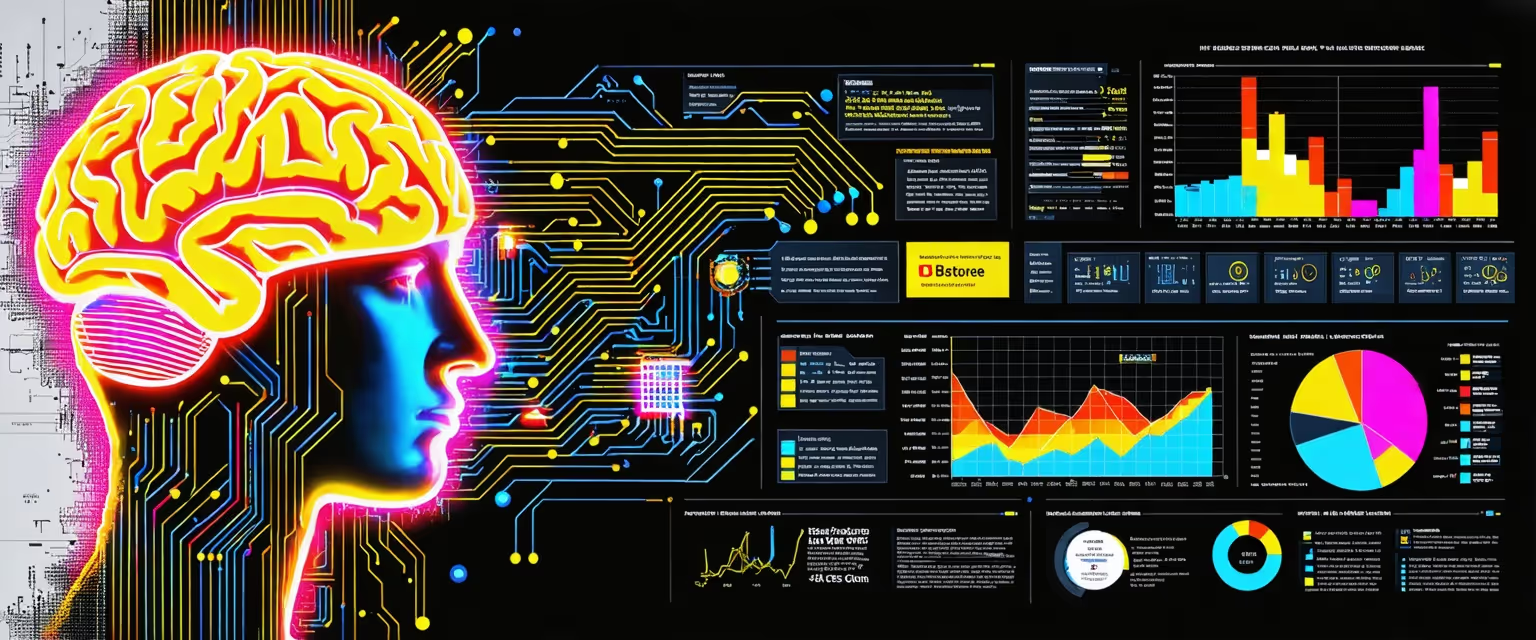All Posts
Construction - AI for Proposal & Vendor Management
How AI Revolutionizes Vendor & Subcontractor Document Management in Construction

Discover how AI automates vendor & subcontractor document management in construction, enhancing efficiency, reducing errors, and improving collaboration.
Managing construction projects means keeping track of countless blueprints, contracts, permits, and schedules—often scattered across different teams and platforms. This fragmentation is a major obstacle that leads to delays, miscommunication, and costly errors. So, how can AI automate vendor and subcontractor document management in construction to solve this issue?
Datagrid’s data connectors offer a solution by unifying fragmented documentation into one accessible platform. By streamlining document management, particularly for vendors and subcontractors, Datagrid saves you time and reduces headaches.
In this article, we'll explore why Datagrid's data connectors could be the tool you need to overcome these challenges.
Challenges in Traditional Vendor & Subcontractor Document Management
In construction, precise document management isn't just a nice-to-have—it's essential to keeping schedules on track and avoiding costly mistakes. But version control is a major stumbling block, especially when dealing with numerous vendors and subcontractors. When multiple people are updating the same file, it's easy for different drafts to float around, causing confusion. This leads to rework and delays as managers try to sort out conflicting edits.
The average construction project can go through about 50+ change orders, showing how quickly inaccurate revisions can stack up. Disorganization only makes things worse. Blueprints, permits, vendor contracts—when these files are scattered among various vendors and subcontractors, progress slows down.
Team members waste time searching for the right version, and critical decisions get postponed. That can push projects off schedule and unnecessarily inflate labor costs.
Then there's the risk of communication delays. Without quick access to updated documents or timely responses to RFIs, team members can't address changes or issues effectively. Deadlines get missed, and confusion grows. Security is another concern; if vendor and subcontractor documents aren't managed properly, sensitive data might fall into the wrong hands.
AI in Vendor & Subcontractor Document Management
Artificial intelligence is changing how industries handle documentation, and construction is right in the mix. Tasks that used to eat up hours—like data entry or sifting through endless pages of vendor and subcontractor documents—are now streamlined thanks to technologies like Natural Language Processing (NLP) and specialized data extraction tools, enabling us to automate data entry.
Data extraction tools, including PDF extraction automation, automatically pull out key details from different document formats, speeding up workflows and cutting down on errors. This is especially valuable in construction, where one misplaced vendor contract or overlooked subcontractor requirement can bring progress to a halt.
Then there's computer vision. Systems can interpret visual elements like diagrams, tables, and layouts to streamline review processes. This comprehensive document analysis helps reduce operational costs and eases the repetitive manual tasks that often bog down project teams.
AI's impact doesn't stop at document workflows. Predictive analytics taps into historical construction data to flag potential scheduling setbacks or budget overruns. AI-powered competitor analysis can also provide strategic insights to keep your firm competitive. Spotting these bottlenecks early allows managers to adjust before real problems surface.
Automating Document Handling Tasks
AI is taking the grunt work out of documentation, especially when it comes to managing vendor and subcontractor documents. Intelligent Document Processing (IDP) can read invoices, blueprints, contracts, vendor agreements, and can automate proposal comparison—recognizing formats, pulling out key data, and making sure the right information gets where it needs to go. This frees up your team to focus on the pressing priorities in construction.
Automation Processes
- Document Classification
AI swiftly sorts files based on patterns or keywords, eliminating the need for manual sorting, including automating PDF parsing. When you're dealing with thousands of vendor and subcontractor documents, this immediate organization is a game-changer. - Data Extraction
NLP zeroes in on important data from both structured and unstructured sources, including data mining from PDFs. Whether it's a total cost figure on a bid, a key date in a vendor contract, or when you need to automate proposal analysis, AI surfaces critical details faster. - Data Validation
AI compares extracted information with existing databases to confirm accuracy, enabling efficient data validation. If something doesn't add up, it's flagged for review. - Workflow Automation
After processing, AI moves documents to the next stage—like submitting them for approval or archiving. Cutting out manual steps, such as AI-powered proposal writing, reduces errors and boosts productivity. AI can also automate document review processes, ensuring that critical vendor and subcontractor documents are thoroughly examined with minimal manual effort.
Benefits of AI in Document Management
Integrating AI into vendor and subcontractor document management tightens up workflows, reduces errors, and enhances teamwork. These improvements translate into significant operational efficiencies and better project outcomes.
Operational Efficiencies
AI tools automate crucial tasks like reading, categorizing, and understanding information from vendor contracts, subcontractor agreements, PDFs, web pages, and even scanned images. This takes the grunt work off your team's shoulders and minimizes mistakes. A small decimal error in an invoice can cause big problems, but AI helps prevent those slips.
Digitizing vendor and subcontractor documents also reduces the need for physical storage and manual filing. In industries that generate mountains of paperwork, AI-driven Intelligent Document Processing (IDP) speeds things up and eliminates bottlenecks. Additionally, utilizing AI agents for report writing can further enhance operational efficiencies by automating the creation of project reports.
Quality Assurance and Collaboration Improvements
These AI-powered document review tools precisely classify content, adhere to legal guidelines, and check for compliance with construction codes or safety regulations. Some applications even highlight risky clauses in vendor and subcontractor contracts so you don't have to sift through every line—a method that's proven effective in legal circles.
Collaboration improves too. When vendor and subcontractor documents are consistently updated and accessible, miscommunication decreases. Everyone has access to the latest file instead of outdated versions.
Challenges and Considerations
Integrating AI into vendor and subcontractor document management isn't without its hurdles. From technical upgrades to cost considerations, each step requires careful planning.
Technical and Organizational Hurdles
Advanced AI solutions often need newer hardware or cloud systems with enough processing power, so some companies might have to overhaul their technology infrastructure. Organizations looking to automate data management need to carefully consider these aspects. Plus, there’s a shortage of skilled professionals who can manage and optimize AI systems, leaving many construction firms with a talent gap.
Change management is crucial. People comfortable with established processes might resist moving to automated workflows. Securing management buy-in and providing proper training can help overcome skepticism. Data security is another critical aspect. Compliance with regulations like GDPR and internal data-protection policies ensures privacy, prevents bias, and upholds ethical standards.
Making sure AI integrates smoothly with existing construction software might involve writing or configuring custom APIs. Without proper integration, teams could miss out on real-time collaboration and insights.
Cost and Initial Implementation Challenges
The upfront cost of AI solutions can be significant. Beyond purchasing new tools, budgets often need to cover server upgrades, cloud subscriptions, staff training, and workflow reorganization. For smaller companies, these expenses can be hard to justify. While attempting to automate data management, companies may face these cost challenges.
It's also important to align AI outcomes with specific project goals and measure the results. If a new AI-driven document system doesn't show tangible improvements, stakeholder confidence might wane. And let's not forget about AI "hallucination"—when the system produces logical-sounding but incorrect outputs. Human oversight is still essential for quality control.
How Agentic AI Simplifies Document Management in Construction
For construction managers juggling complex projects, Datagrid's data connectors and AI agents can automate document processing, making daily tasks a lot more manageable. The platform integrates seamlessly with industry staples like Procore, PlanGrid, and Autodesk BIM 360, cutting down on constant data entry. It also provides ways to integrate Salesforce with DocuSign, further enhancing your document management capabilities.
RFPs, submittals, change orders, and daily reports flow automatically, filling in the details your team needs without the repetitive copy-paste. AI agents can analyze new vendor bid documents and compare them to historical data, flagging potential issues so managers can address them before they become problems. Tracking subcontractor permit statuses gets easier too, especially when you're dealing with different regional requirements.
Datagrid also connects with Microsoft Project or Primavera P6 to keep scheduling and resource allocation in one place. Accounting tasks aren't left behind either—linking with Sage 300 or QuickBooks reduces manual cost logging.
Key Task Automation Capabilities
- Document Management
AI agents identify, process, and route submittals, RFIs, change orders, vendor contracts, and subcontractor agreements to the right people, speeding up approvals and keeping projects on track. - Safety Compliance
By integrating with safety software, Datagrid monitors incident reports, checks certifications, and keeps an eye on worker qualifications. Early alerts go out if something's amiss. - Progress Tracking
Daily logs, photos, and scheduling updates feed into an automated progress report. Potential delays are flagged immediately, so leaders can tackle them without missing critical deadlines. - Communication Optimization
Through Slack or Microsoft Teams, relevant alerts and updates—like RFI responses—reach the right people, enhancing collaboration.
Simplify Construction Document Management with Agentic AI
The challenge of disorganized vendor and subcontractor documents doesn't have to hinder your projects. Ready to transform your construction management with AI-powered efficiency? Datagrid offers:
- Seamless integration with Procore, PlanGrid, and BIM 360
- AI-driven RFP analysis and bid management
- Automated submittal, vendor contract, and change order processing
- Real-time project insights and schedule optimization
With capabilities to integrate Salesforce with DocuSign, Datagrid further simplifies document management. Discover how Datagrid can boost your process efficiency.












